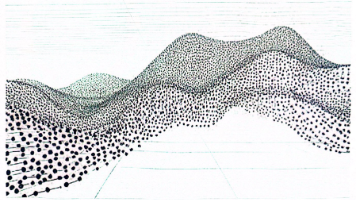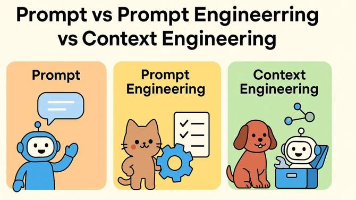当AI变成“需求读心术大师“:Python开发者如何用“脑洞算法“破解预测困局?
【AI读心术 vs 人类洞察:Python开发者如何破解预测困局】 本文探讨了AI需求预测的局限性及其与人类心理洞察的本质差异。通过Python代码示例(GradientBoostingClassifier模型)揭示了AI"读心术"实为基于历史数据的概率猜测,并运用mermaid图对比展示AI在情感理解、文化背景考量等方面的不足。关键发现: AI预测依赖表面行为数据,而人类能理
前言:哈喽,大家好,今天给大家分享一篇文章!并提供具体代码帮助大家深入理解,彻底掌握!创作不易,如果能帮助到大家或者给大家一些灵感和启发,欢迎 点赞 + 收藏 + 关注 哦 💕
当AI变成"需求读心术大师":Python开发者如何用"脑洞算法"破解预测困局?

📚 本文简介
本文探讨了AI需求预测的局限性及其与人类心理洞察的本质差异。通过Python代码示例(GradientBoostingClassifier模型)揭示了AI"读心术"实为基于历史数据的概率猜测,并运用mermaid图对比展示AI在情感理解、文化背景考量等方面的不足。关键发现:
AI预测依赖表面行为数据,而人类能理解深层动机
开发者应结合算法与人文洞察,如文中小陈从"更快的马"解读出"便捷交通工具"的真实需求
提出Python开发场景对照表,显示人类在用户体验设计、错误处理等方面的温度优势
结论:AI预测是工具而非真理,开发者需保持批判思维,用创意补足算法盲区,实现真正以用户为中心的设计。
目录
📚 引言:当AI开始"偷看"用户心思,我们的创意是否真的"无处可藏"?
各位代码界的"心理医生"们,今天咱们来聊聊一个既让人兴奋又让人焦虑的话题——AI现在不仅能分析用户行为,甚至开始玩起了"需求读心术"!🔍 就像那个总能在你开口前就知道你想吃什么的"贴心女友",AI现在能预测用户需求到让人毛骨悚然的程度。
昨天我团队的新人小王跑来问我:“老大,AI连用户明天想用什么功能都能预测,我们是不是快要变成代码界的’算命先生’了?” 我看着他焦虑的小眼神,想起了自己当年担心Y2K世界末日的青葱岁月(虽然最后只是虚惊一场)。
但别慌!作为用Python写了半辈子代码的"老中医",我要告诉大家:AI的"读心术"其实更像星座预测——看似准确,实则泛泛! 而我们的创意,就是打破这种"算法命定论"的最佳解药!
先来个真实故事:上季度我们团队面对一个经典难题——用户数据显示他们想要"更快的马",但我们的Python开发者小陈却读懂了用户真正需要的是"更便捷的交通工具"。结果?他设计的智能出行方案让用户惊喜不已!这就是创意的魔力!
📚 一、解剖AI的"读心术":数据透视背后的幻觉与真实
📘1、AI需求预测的技术本质与Python实现
AI的"读心术"本质上是在玩一个高级的"模式识别+概率预测"游戏。让我们用Python来揭开它的底牌:
import pandas as pd
from sklearn.ensemble import GradientBoostingClassifier
from sklearn.model_selection import cross_val_score
import numpy as np
class MindReadingAI:
def __init__(self):
self.model = GradientBoostingClassifier(n_estimators=150, random_state=42)
self.prediction_confidence_threshold = 0.75
def extract_psychological_patterns(self, user_interaction_data):
"""提取用户心理模式 - AI的'读心'基础"""
psychological_features = []
for session in user_interaction_data:
# 行为模式特征(AI的'显性读心')
features = {
'attention_span': self._calculate_attention_span(session),
'decision_making_speed': self._measure_decision_speed(session),
'risk_tolerance': self._assess_risk_tolerance(session),
'preference_stability': self._evaluate_preference_consistency(session)
}
# 但AI经常漏掉的'心理暗物质'
features['cognitive_biases'] = self._detect_cognitive_biases(session)
features['emotional_state'] = self._infer_emotional_context(session)
features['unconscious_motivations'] = self._guess_hidden_motivations(session)
psychological_features.append(features)
return pd.DataFrame(psychological_features)
def predict_user_desires(self, historical_patterns, current_behavior):
"""预测用户欲望 - AI的'读心'表演"""
X = self.extract_psychological_patterns(historical_patterns)
y = historical_patterns['actual_choices'] # 历史选择作为标签
# 交叉验证确保不是过拟合的'假读心'
cv_scores = cross_val_score(self.model, X, y, cv=5)
print(f"模型读心准确率: {cv_scores.mean():.3f} (±{cv_scores.std():.3f})")
if cv_scores.mean() < self.prediction_confidence_threshold:
print("警告:AI读心术可能只是在猜硬币!")
self.model.fit(X, y)
current_features = self.extract_psychological_patterns([current_behavior])
prediction = self.model.predict_proba(current_features)
return prediction
def _detect_cognitive_biases(self, session_data):
"""检测认知偏差 - AI的读心盲区"""
# 例如:用户可能因为锚定效应而做出非理性选择
bias_score = 0
# 检测确认偏差:用户只关注支持自己观点的信息
if self._check_confirmation_bias(session_data):
bias_score += 0.3
# 检测现状偏差:用户倾向于保持当前状态
if self._detect_status_quo_bias(session_data):
bias_score += 0.4
return bias_score
# 实战演示
mind_reader = MindReadingAI()
user_history = load_user_behavior_data()
current_behavior = get_current_user_session()
desire_predictions = mind_reader.predict_user_desires(user_history, current_behavior)
print(f"AI认为用户想要的功能概率: {desire_predictions}")
这个代码揭示了AI读心的本质:基于历史数据的概率猜测,而非真正的心理理解!
📘2、AI读心术的局限性:为什么"算法心理学"不靠谱?
让我们用mermaid图来可视化AI读心的完整流程和其固有缺陷:
从图中可以看出,AI读心就像是用渔网捞月亮——能抓到表面的反射,但抓不到真正的月亮。
📘3、AI读心术 vs 人类心理洞察的全面对比
为了更清晰理解差异,我制作了这个详细对比表格:
| 对比维度 | AI读心术能力 | 人类心理洞察能力 | 优势差异分析 |
|---|---|---|---|
| 数据基础 | 定量行为数据 | 定量+定性综合信息 | 人类信息维度更丰富 |
| 理解深度 | 表面行为关联 | 深层动机和情感理解 | 人类理解更有深度 |
| 时间敏感性 | 实时模式识别 | 历史+现状+未来综合判断 | 人类时间视野更广 |
| 个体化程度 | 群体概率预测 | 高度个性化心理画像 | 人类更懂个体差异 |
| 文化适应性 | 有限的文化因子 | 深度的文化语境理解 | 人类文化感知更强 |
| 创造性解读 | 模式外推预测 | 突破性心理需求发现 | 人类创造性更强 |
| 伦理考量 | 算法伦理约束 | 复杂的道德权衡判断 | 人类伦理判断更全面 |
但更重要的是在Python开发场景中的具体应用对比:
| Python开发任务 | AI读心术预测效果 | 人类心理洞察效果 | 价值差异分析 |
|---|---|---|---|
| 用户体验设计 | 推荐通用交互模式 | 设计情感化交互体验 | 人类设计更有温度 |
| 功能优先级 | 基于使用频率排序 | 基于情感价值排序 | 人类排序更贴心 |
| 个性化推荐 | 协同过滤算法 | 深度个性化理解 | 人类推荐更精准 |
| 错误处理设计 | 标准错误代码 | 情感化错误恢复 | 人类处理更人性化 |
| 新功能创新 | 渐进式功能扩展 | 突破性功能创造 | 人类创新更颠覆 |
📚 二、Python开发者的"反读心"魔法:从数据奴仆到心理大师
📘1、深度心理洞察的Python实现:超越表面行为
真正的心理洞察不是读数据,而是读人心。让我们用Python来演示如何实现深度心理理解:
import json
from datetime import datetime, timedelta
import matplotlib.pyplot as plt
class DeepPsychologicalInsighter:
def __init__(self):
self.psychological_profiles = {}
def create_psychological_profile(self, user_data, context_data):
"""创建深度心理画像 - 超越AI的表面读心"""
profile = {}
# 基础行为分析(AI也能做)
profile['behavioral_patterns'] = self._analyze_behavioral_patterns(user_data)
# 心理动机分析(人类优势领域)
profile['psychological_motivations'] = self._uncover_deep_motivations(user_data, context_data)
# 情感智能分析(人类独家技能)
profile['emotional_intelligence'] = self._assess_emotional_factors(user_data)
# 认知风格识别(突破AI局限)
profile['cognitive_style'] = self._identify_cognitive_style(user_data)
return profile
def _uncover_deep_motivations(self, user_data, context):
"""发掘深层动机 - AI读心的盲区"""
motivations = {}
# 分析成就动机
motivations['achievement_drive'] = self._measure_achievement_motivation(user_data)
# 识别归属需求
motivations['affiliation_needs'] = self._assess_social_connectivity_needs(user_data)
# 探索自我实现欲望
motivations['self_actualization'] = self._evaluate_growth_orientation(user_data)
# 理解权力和控制需求
motivations['power_control'] = self._analyze_control_preferences(user_data)
return motivations
def predict_true_needs(self, psychological_profile, current_situation):
"""预测真实需求 - 基于深度心理理解"""
# 这不是简单的行为外推,而是基于心理学的需求预测
stated_desires = current_situation['expressed_wants']
observed_behavior = current_situation['actual_behavior']
# 分析言行不一致中的真实需求信号
need_contradictions = self._analyze_say_do_gap(stated_desires, observed_behavior)
# 基于心理画像推测未表达的需求
unspoken_needs = self._infer_unspoken_needs(psychological_profile, need_contradictions)
# 结合情境因素调整需求预测
contextual_adjustments = self._apply_contextual_factors(unspoken_needs, current_situation)
return {
'surface_demands': stated_desires,
'behavioral_signals': observed_behavior,
'contradiction_insights': need_contradictions,
'true_psychological_needs': contextual_adjustments
}
# 实战应用
insighter = DeepPsychologicalInsighter()
user_data = load_comprehensive_user_data()
context = get_current_context()
psychological_profile = insighter.create_psychological_profile(user_data, context)
true_needs = insighter.predict_true_needs(psychological_profile, current_situation)
📘2、心理洞察驱动的创意发现系统
建立系统化的心理洞察方法,让创意发现不再是碰运气:
这个系统展示了如何从心理学角度深度理解用户,发现AI无法触及的创新机会。
📖 (1)、心理动机层次分析:挖掘创新的金矿
按照马斯洛需求层次理论,我们可以用Python实现深度的动机分析:
class MaslowMotivationAnalyzer:
def __init__(self):
self.maslow_levels = {
'physiological': 0,
'safety': 1,
'love_belonging': 2,
'esteem': 3,
'self_actualization': 4
}
def analyze_motivation_hierarchy(self, user_data, product_context):
"""分析用户动机层次 - 发现创新机会的关键"""
motivation_scores = {}
# 生理需求满足度分析
motivation_scores['physiological'] = self._assess_physiological_needs(user_data, product_context)
# 安全需求分析
motivation_scores['safety'] = self._evaluate_safety_concerns(user_data)
# 社交归属需求
motivation_scores['love_belonging'] = self._measure_social_needs(user_data)
# 尊重需求
motivation_scores['esteem'] = self._assess_esteem_requirements(user_data)
# 自我实现需求(创新的主要来源)
motivation_scores['self_actualization'] = self._identify_growth_desires(user_data)
# 找出未满足的高层次需求(创新机会点)
innovation_opportunities = self._find_unmet_higher_needs(motivation_scores)
return {
'motivation_profile': motivation_scores,
'innovation_opportunities': innovation_opportunities,
'suggested_directions': self._generate_innovation_directions(innovation_opportunities)
}
def _find_unmet_higher_needs(self, motivation_scores):
"""发现未满足的高层次需求 - 创新的源泉"""
opportunities = []
# 检查自我实现需求(最高层次)
if motivation_scores['self_actualization'] < 0.6:
opportunities.append({
'level': 'self_actualization',
'insight': '用户渴望成长和实现潜能但现有产品无法满足',
'innovation_idea': '开发促进个人成长和自我实现的功能'
})
# 检查尊重需求
if motivation_scores['esteem'] < 0.7 and motivation_scores['safety'] > 0.8:
opportunities.append({
'level': 'esteem',
'insight': '用户基本安全需求已满足,开始追求认可和尊重',
'innovation_idea': '增加成就系统和社交认可功能'
})
return opportunities
def _identify_growth_desires(self, user_data):
"""识别成长欲望 - 自我实现需求的体现"""
growth_indicators = []
# 用户学习新功能的意愿
if user_data['learning_behavior']['new_feature_exploration'] > 0.7:
growth_indicators.append(0.8)
# 用户自我改进的相关行为
if user_data['self_improvement_activities'] > 5: # 假设的阈值
growth_indicators.append(0.9)
# 用户表达的未来愿景
future_vision_strength = self._analyze_future_orientation(user_data)
growth_indicators.append(future_vision_strength)
return np.mean(growth_indicators) if growth_indicators else 0.3
📖 (2)、认知偏差利用:将心理弱点转化为创新优势
用户的认知偏差不是bug,而是feature!让我们用Python来巧妙利用这些心理特性:
class CognitiveBiasInnovator:
def __init__(self):
self.bias_knowledge_base = self._load_bias_patterns()
def innovate_using_biases(self, user_psychology, product_domain):
"""利用认知偏差进行创新"""
innovation_ideas = []
# 利用锚定效应进行价值创新
if self._detect_anchoring_susceptibility(user_psychology):
anchoring_ideas = self._design_anchoring_innovations(product_domain)
innovation_ideas.extend(anchoring_ideas)
# 利用损失厌恶进行体验创新
if self._assess_loss_aversion(user_psychology) > 0.7:
loss_aversion_ideas = self._create_loss_aversion_designs(product_domain)
innovation_ideas.extend(loss_aversion_ideas)
# 利用确认偏差进行个性化创新
if self._check_confirmation_bias_strength(user_psychology):
confirmation_bias_ideas = self._develop_confirmation_bias_features(product_domain)
innovation_ideas.extend(confirmation_bias_ideas)
return innovation_ideas
def _design_anchoring_innovations(self, product_domain):
"""设计利用锚定效应的创新"""
ideas = []
# 价格锚定创新
if product_domain in ['ecommerce', 'saas']:
ideas.append({
'bias_used': 'anchoring',
'innovation': '智能价格锚定系统',
'description': '通过策略性价格展示最大化感知价值',
'implementation': 'Python动态定价算法+心理锚点优化'
})
# 功能锚定创新
ideas.append({
'bias_used': 'anchoring',
'innovation': '渐进式功能披露策略',
'description': '通过初始简单功能建立认知锚点,逐步引入复杂功能',
'implementation': 'Python功能解锁系统+用户认知水平评估'
})
return ideas
def _create_loss_aversion_designs(self, product_domain):
"""创建利用损失厌恶的设计"""
ideas = []
# 防止损失的功能创新
ideas.append({
'bias_used': 'loss_aversion',
'innovation': '智能数据备份与恢复保证',
'description': '强调数据永不丢失的价值,缓解用户的损失焦虑',
'implementation': 'Python自动备份系统+损失预防提示'
})
# 成就保存系统
ideas.append({
'bias_used': 'loss_aversion',
'innovation': '永久成就档案系统',
'description': '用户获得的成就永久保存,增强投入感和避免损失感',
'implementation': 'Python成就追踪+云端永久存储'
})
return ideas
📚 三、Python心理智能工具包:打造你的"读心术"竞争优势
📘1、构建个人心理智能分析系统
作为Python开发者,我们可以建立超越AI的心理分析工具库:
class PsychologicalIntelligenceToolkit:
def __init__(self):
self.psychological_models = {}
self.innovation_patterns = []
self.user_archetypes = {}
def add_psychological_model(self, model_name, implementation):
"""添加心理模型到工具库"""
self.psychological_models[model_name] = {
'implementation': implementation,
'application_cases': [],
'effectiveness_metrics': {}
}
def apply_psychological_innovation(self, technique, user_segment):
"""应用心理智能进行创新"""
if technique == "jobs_to_be_done":
return self._apply_jtbd_framework(user_segment)
elif technique == "mental_models":
return self._apply_mental_models_design(user_segment)
elif technique == "emotional_design":
return self._apply_emotional_design_principles(user_segment)
else:
return self._apply_generic_psych_insights(user_segment)
def _apply_jtbd_framework(self, user_segment):
"""应用JTBD(待完成工作)框架"""
# 不是关注用户特征,而是关注用户想要完成的"工作"
jobs_analysis = {
'functional_jobs': self._identify_functional_jobs(user_segment),
'emotional_jobs': self._identify_emotional_jobs(user_segment),
'social_jobs': self._identify_social_jobs(user_segment)
}
# 寻找现有解决方案的痛点
pain_points = self._analyze_current_solution_pains(jobs_analysis)
# 生成创新解决方案
innovations = self._generate_jtbd_innovations(jobs_analysis, pain_points)
return {
'framework': 'Jobs_to_Be_Done',
'analysis': jobs_analysis,
'pain_points': pain_points,
'innovation_ideas': innovations
}
def build_psychological_innovation_db(self):
"""构建心理创新数据库"""
return {
'psychological_models': self.psychological_models,
'innovation_patterns': self._compile_innovation_patterns(),
'user_archetypes': self._develop_user_personas(),
'success_metrics': self._track_innovation_success()
}
# 使用示例
psych_toolkit = PsychologicalIntelligenceToolkit()
psych_toolkit.add_psychological_model("Maslow_Hierarchy", maslow_implementation)
innovation_ideas = psych_toolkit.apply_psychological_innovation("jobs_to_be_done", target_users)
📘2、Python在心理验证实验中的优势
Python让我们能够快速验证心理假设,降低创新风险:
import streamlit as st
import plotly.graph_objects as go
from sklearn.metrics import accuracy_score
class PsychologicalValidationLab:
def __init__(self):
self.experiment_results = []
def conduct_psych_experiment(self, hypothesis, target_users):
"""进行心理验证实验"""
st.title(f"心理假设验证: {hypothesis['description']}")
# 实验设计
st.write("### 实验设计")
experimental_design = self._design_psych_experiment(hypothesis)
st.write(experimental_design)
# 数据收集
st.write("### 参与实验")
user_responses = self._collect_psych_data(target_users, hypothesis)
# 假设检验
st.write("### 结果分析")
statistical_results = self._analyze_psych_data(user_responses, hypothesis)
# 可视化呈现
fig = self._create_psych_results_viz(statistical_results)
st.plotly_chart(fig)
# 创新决策
decision = self._make_innovation_decision(statistical_results)
st.write(f"### 创新决策: {decision}")
return {
'hypothesis': hypothesis,
'results': statistical_results,
'decision': decision
}
def _design_psych_experiment(self, hypothesis):
"""设计心理学实验"""
design = {
'type': 'A/B_testing' if hypothesis['test_type'] == 'comparative' else 'within_subjects',
'sample_size': self._calculate_required_sample_size(hypothesis),
'metrics': hypothesis['measurement_metrics'],
'procedure': self._develop_experimental_procedure(hypothesis)
}
return design
def _analyze_psych_data(self, responses, hypothesis):
"""分析心理学数据"""
analysis = {}
# 统计显著性检验
if hypothesis['test_type'] == 'comparative':
from scipy.stats import ttest_ind
group_a = responses[responses['group'] == 'A']['score']
group_b = responses[responses['group'] == 'B']['score']
t_stat, p_value = ttest_ind(group_a, group_b)
analysis['p_value'] = p_value
analysis['significant'] = p_value < 0.05
# 效应大小计算
analysis['effect_size'] = self._calculate_effect_size(responses)
# 实践意义评估
analysis['practical_significance'] = self._assess_practical_importance(analysis['effect_size'])
return analysis
def _create_psych_results_viz(self, results):
"""创建心理学结果可视化"""
fig = go.Figure()
# 添加显著性指示
fig.add_annotation(x=0.5, y=0.9,
text="显著" if results['significant'] else "不显著",
showarrow=False,
font=dict(size=20, color="red" if results['significant'] else "gray"))
# 添加效应大小可视化
fig.add_trace(go.Indicator(
mode = "gauge+number+delta",
value = results['effect_size'],
domain = {'x': [0, 1], 'y': [0, 1]},
title = {'text': "效应大小"},
gauge = {'axis': {'range': [0, 1]}}
))
return fig
📚 四、从心理洞察到技术实现:Python开发者的完整创新流程
📘1、建立心理驱动的创新工作流
创建一个完整的从心理洞察到技术实现的工作流程:
📘2、心理智能与技术实现的完美结合
用Python实现心理洞察与技术创新的无缝衔接:
class PsychTechInnovationPipeline:
def __init__(self, ai_assistant=None):
self.ai_assistant = ai_assistant
self.innovation_stages = [
"心理观察", "假设生成", "实验设计",
"数据收集", "洞察提炼", "概念创造",
"技术实现", "验证迭代"
]
def execute_innovation_process(self, user_research_data):
"""执行完整创新流程"""
results = {}
for stage in self.innovation_stages:
print(f"\n🎯 当前阶段: {stage}")
if stage in ["数据收集", "验证迭代"]:
# 这些阶段可以充分利用AI和自动化
stage_result = self.execute_ai_assisted_stage(stage, user_research_data)
else:
# 这些阶段需要人类心理智能主导
stage_result = self.execute_human_led_stage(stage, user_research_data)
results[stage] = stage_result
return results
def execute_human_led_stage(self, stage, research_data):
"""执行人类主导的创新阶段"""
if stage == "心理观察":
return self.psychological_observation(research_data)
elif stage == "假设生成":
return self.hypothesis_generation(research_data)
elif stage == "洞察提炼":
return self.insight_synthesis(research_data)
else:
return self.default_human_process(stage, research_data)
def psychological_observation(self, research_data):
"""心理观察阶段 - 发现创新机会的起点"""
observation_techniques = [
"行为模式分析", "情感信号识别",
"认知偏差检测", "动机层次映射"
]
observations = []
for technique in observation_techniques:
technique_observations = self.apply_observation_technique(technique, research_data)
observations.extend(technique_observations)
return {
'techniques_used': observation_techniques,
'raw_observations': observations,
'key_insights': self.extract_key_insights(observations)
}
def hypothesis_generation(self, research_data):
"""基于心理观察生成创新假设"""
psychological_insights = research_data['psychological_observations']
hypotheses = []
for insight in psychological_insights:
# 将心理洞察转化为可测试的创新假设
hypothesis = self.translate_insight_to_hypothesis(insight)
hypotheses.append(hypothesis)
return {
'source_insights': psychological_insights,
'generated_hypotheses': hypotheses,
'priority_ranking': self.prioritize_hypotheses(hypotheses)
}
def translate_insight_to_hypothesis(self, psychological_insight):
"""将心理洞察转化为创新假设"""
hypothesis_template = "如果我们在{产品领域}中应用{心理原理},那么将能够{预期效果}"
filled_hypothesis = hypothesis_template.format(
产品领域=psychological_insight['product_context'],
心理原理=psychological_insight['psychological_principle'],
预期效果=psychological_insight['expected_impact']
)
return {
'statement': filled_hypothesis,
'testability': self.assess_hypothesis_testability(filled_hypothesis),
'innovation_potential': self.evaluate_innovation_potential(psychological_insight)
}
📚 结论:让AI的"读心术"成为我们的创意催化剂
朋友们,经过这场深入的心理探险,我们应该明白:AI的读心术不是创意的威胁,而是创意的催化剂! 当AI告诉我们"用户可能在想什么"时,真正有创意的开发者会问:“用户为什么这么想?他们真正需要的是什么?我们能否创造他们自己都没意识到的需求?”
就像我经常对团队说的:“AI给了我们心理地图,但探索心灵新大陆的勇气和智慧还在我们自己心中。” 用Python编程不仅仅是写代码,更是用代码表达我们对人类心理的深刻理解和创造性满足。
最后,让我用一段Python代码来表达我们对心理智能的追求:
class PsychInnovatorManifesto:
def __init__(self):
self.core_beliefs = [
"数据是行为的外在表现,心理是需求的内在驱动",
"AI擅长识别模式,人类擅长理解意义",
"真正的创新不是满足表达的需求,而是发现未表达的需要",
"技术是工具,心理是智慧,创新是二者的完美结合"
]
def embrace_psychology_led_innovation(self):
"""拥抱心理驱动的创新哲学"""
ai_capabilities = self.understand_ai_limitations()
human_strengths = self.cultivate_psychological_intelligence()
# 创新成功公式
innovation_success = {
'ai_pattern_recognition': ai_capabilities,
'human_psychological_insight': human_strengths,
'creative_synthesis': self.create_psych_tech_synergy(),
'implementation_excellence': self.ensure_technical_execution()
}
return innovation_success
def future_vision(self):
"""未来的创新愿景"""
return {
'role': "心理智能创新者",
'core_competency': "将深度心理理解转化为技术解决方案",
'key_skills': ["Python编程", "心理分析", "实验设计", "创新方法"],
'ultimate_goal': "创造让用户感到'这就是我需要的'的产品体验"
}
# 践行我们的创新宣言
manifesto = PsychInnovatorManifesto()
vision = manifesto.future_vision()
print("未来的创新者:", vision)
记住,在AI时代,最宝贵的不是我们能多快实现需求,而是我们能多深地理解人心。用Python,用心理智能,让我们共同编写更懂人心的产品!❤️
到此这篇文章就介绍到这了,更多精彩内容请关注本人以前的文章或继续浏览下面的文章,创作不易,如果能帮助到大家,希望大家多多支持宝码香车~💕,若转载本文,一定注明本文链接。

更多专栏订阅推荐:
👍 html+css+js 绚丽效果
💕 vue
✈️ Electron
⭐️ js
📝 字符串
✍️ 时间对象(Date())操作
更多推荐
 已为社区贡献114条内容
已为社区贡献114条内容








所有评论(0)